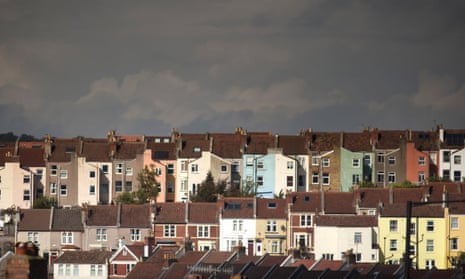Philip Hammond has confirmed that the government’s help-to-buy mortgage guarantee scheme will be closed by the end of the year, another of former chancellor George Osborne’s flagships now abandoned by the Treasury.
In a letter to Bank of England governor Mark Carney, the chancellor said the scheme had a “specific purpose that has now been successfully achieved”.
Launched in late 2013, the scheme meant buyers only needed to raise 5% of the property value for a deposit, with a government guarantee on a further 15% to give mortgage lenders the incentive to loan larger amounts.
The scheme was scheduled to expire at the end of 2016, but mortgage lenders had called for it to be replaced, warning that its closure would push the first-time-buyer market back into decline.
Hammond said the Bank of England’s financial policy committee had concluded that the decision to end the scheme “will be unlikely, in current market conditions, to affect significantly the provision of finance to prospective mortgagors, including high LTV [loan-to-value] borrowers”.
The scheme has helped more than 86,000 households, many of them buying lower-value properties, with an average property price of £157,000 compared with the national average of £216,000.
In March, the Intermediary Mortgage Lenders Association, which represents firms who lend through brokers and advisers, found that 75% of brokers and 65% of lenders expected first-time buyer numbers to drop if the scheme ended without a replacement. And 75% of brokers and 85% of lenders thought access to homeownership would suffer as a result.
Hammond said market confidence meant buyers were less reliant on the scheme, with 30 lenders now offering their own 90-95% mortgage schemes.
The financial policy committee found that the scheme “has not been a material driver of house price growth”, Hammond said, despite reports this week that help to buy as a whole had pushed up house prices by an average of £8,250, according to research from housing charity Shelter.
The chancellor said it was “important to note that the end of this particular scheme does not diminish in any way the government’s commitment to supporting those looking to get on the housing ladder”.
Other help-to-buy schemes will continue until 2020, including the five-year, interest-free equity loans available for up to 20% of the property price when a buyer has raised their own 5% for a deposit. However, that scheme is only available for new-build homes.
The help-to-buy ISA will also continue, a scheme described as a “scandal” by some savers, after it emerged that the much-vaunted 25% government bonus to top up savings would only be paid after completion of a sale, rather than helping to fund a higher deposit.
Housing market experts said that rendered the ISA technically useless, and many savers had opened accounts under the impression that they could use the bonus for a deposit.
